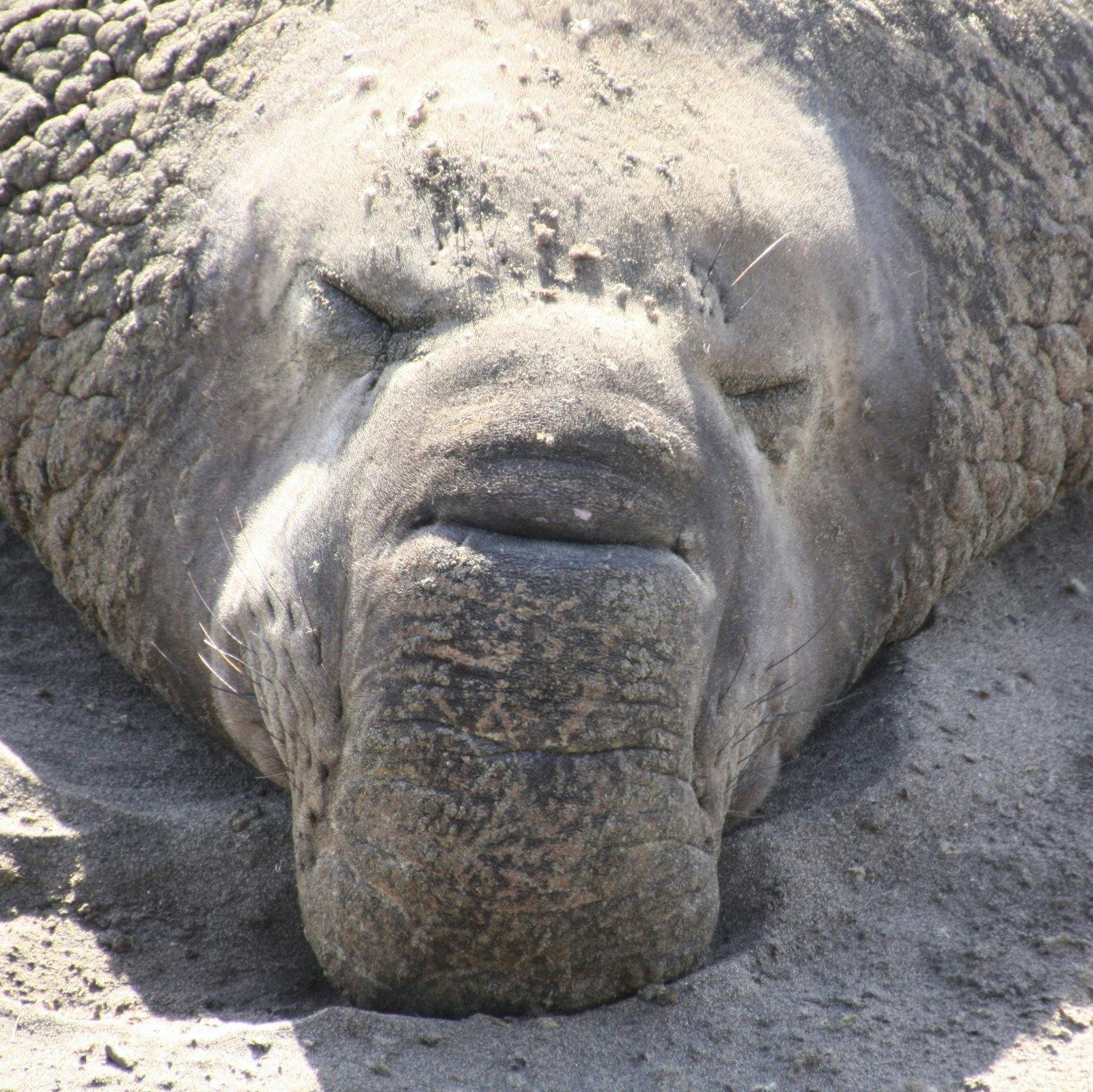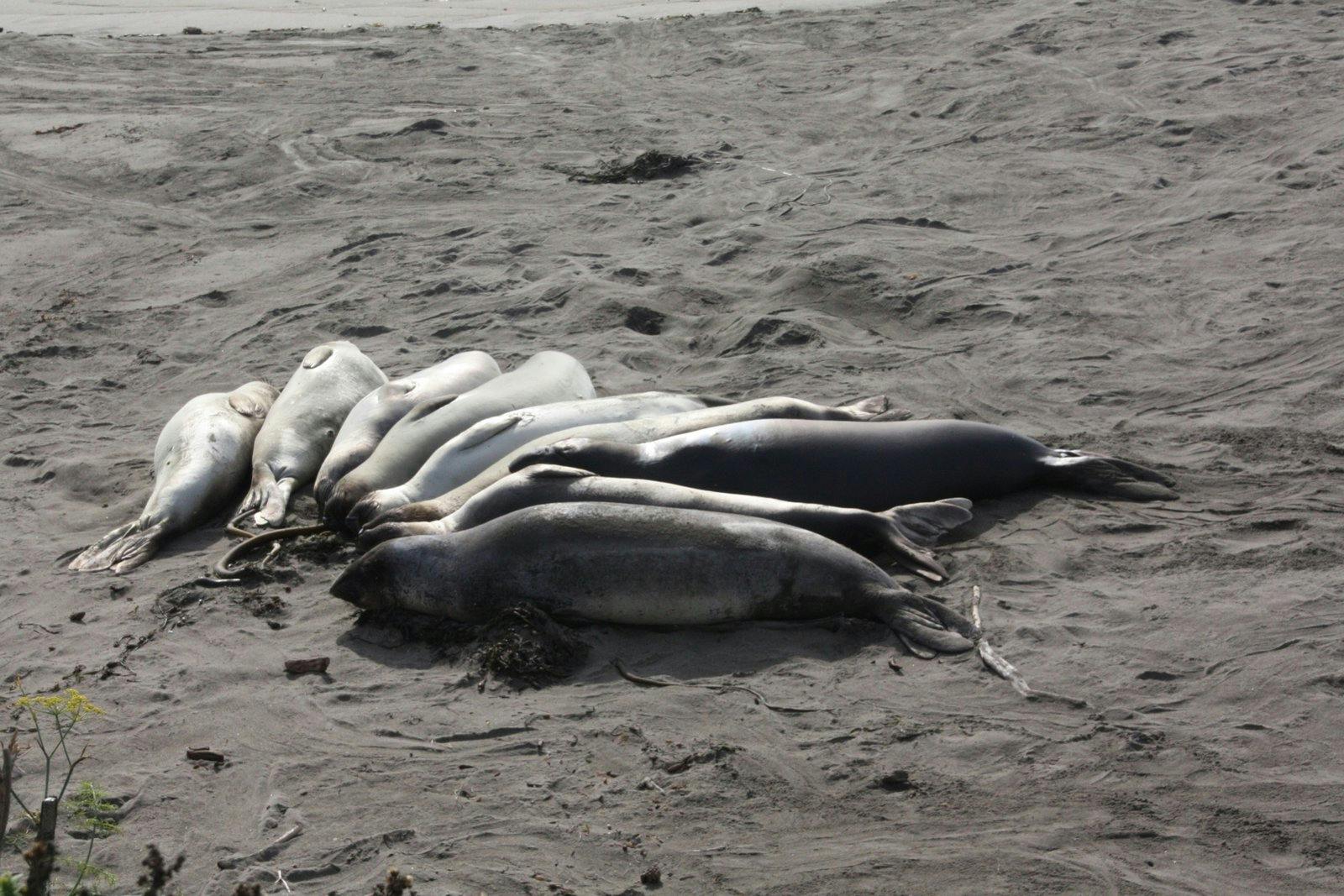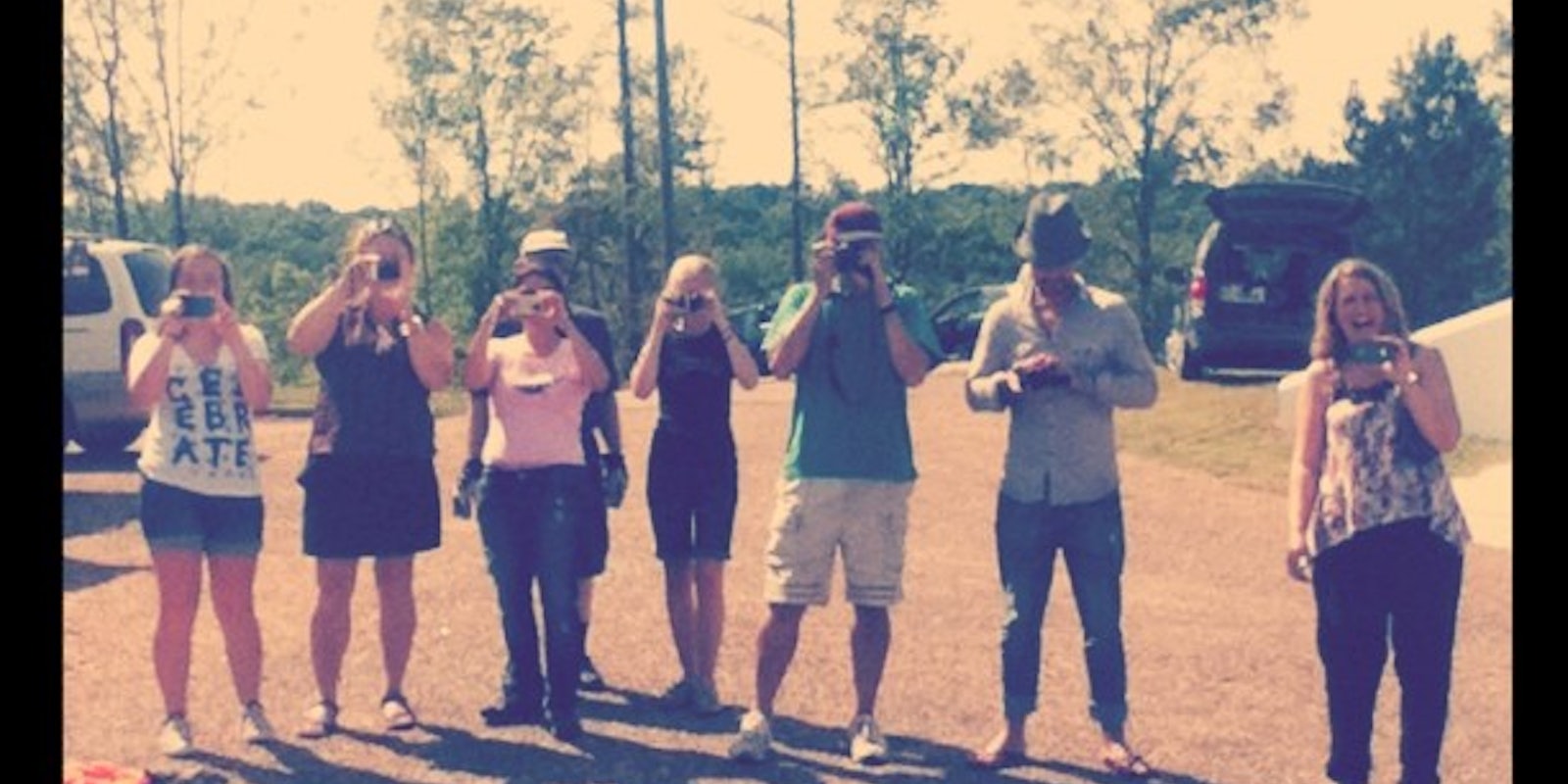It was a bit overcast, fog filling in crevices of the hills that wrap California’s coast. Just hours before, my partner and I had seen a California Condor. I was taking pictures of the ocean at the time so I happened to have my camera at the ready with my new telephoto lens and snapped off several photos. They weren’t bad.
So when we pulled up to the elephant seals near Hearst Castle, I was already trigger happy and inspired.
This particular stop is one of my favorites, and the reason that I sometimes like to take the coast rather than the boring Interstate 5 route that cuts a straight swath from my home in San Francisco to my parents’ home in LA.
You can get pretty close to the elephant seals, watching them throughout their mating season. The Friends of the Elephant Seal volunteers were out in their nifty blue jackets, stationed at a table and at strategic places along the boardwalk where you can get a pretty close view of these giant mammals.

John started telling me as I continued to click. These elephant seals, he explained, feed in Alaska and then swim all the way to California where they were born. They then lug their often massive bodies onto the sand. If they make it past their male challengers who like to stop them as they come ashore, they basically find a place to rest. And then they do. For up to 100 days. Without food. They look tired because, well, they are.
“Wow,” I said. Click. “So what do you think that guy weighs?”
“I’ll tell you if you look at me,” he said—or something to that effect. I pulled my camera away from my eye and looked at him, feeling like I had just been reprimanded by my eighth grade art teacher who used to scold us for not paying attention.
“Oh, sorry,” I said, sheepishly. I was being rude.
He smiled a kind of half-smile and told me hey, it was fine if I wanted to take pictures, but then got unexpectedly Zen on me, explaining that people are so damned (my word not his) busy taking pictures and recording the moment, that they don’t experience it.
It’s not the first time I’ve heard that argument. In fact, I’ve made it myself. He had a point. We are now walking around all the time with these cameras in our pockets and on our bodies. We’re recording our lives as we live them, posting to Facebook and Instagram, bragging about our exciting ventures on Tumblr and Twitter.
If we don’t have a digital SLR adhered to our eye, we have smartphones with resolutions so fine that we really can take great pictures almost everywhere we go.
That elephant seal he said, locking his blue eyes with mine, weighs more than two tons. He’s big and he’s tired.
I look at John, glad for this personal contact.
Is he right? Am I missing life by recording it?
I think about this for awhile. “You’re right,” I tell him, chastened. I should just observe. He shrugged knowingly.
We walked further down the wooden path. I looked around, resisting the urge to draw my camera to my face and snap photos. I took a cleansing breath in and slowly exhaled. I tasted the hint of salt in the air, listened to the sounds of waves crashing and a seal howling in the distance.
“I’m experiencing this,” I thought. “This is better this way. I do not need to record every moment of my life.”
Just then, I saw some seals lined up, as if—as if posing for me, framing themselves perfectly. I could no longer resist. I drew my camera to my eye and pressed. The shutter made a satisfying click. Guilt flooded me for an instant.
And then it disappeared.
He’s wrong, I thought. I’m not missing life by recording it. I’m actually more vigilant, always looking at the world in a way that I can frame a moment, capture a parcel of time and space, reflect on the universe. We all do it.
The more we take pictures of our lives, the more we walk around looking at the world like artists. That isn’t to say we’re all talented, wonderful, photographers. But frankly, that’s besides the point.
I’m addicted to Instagram for a reason. Every day, as I scroll through the pictures, I’m amazed by how often I come across beauty; how many times a photo evokes a feeling, and how impressed I am by these images.
So when I raise my iPhone or my Canon 7D, I’m capturing just a little sampling of my time/space continuum. And I’m OK with that. But I also want to remember to put my device down long enough to look someone in the eyes and make a connection: a human connection.
Click.
Janet Kornblum is a journalist, writer, media trainer and, believe it or not, has a bachelor’s degree in political science. She also does other stuff but we won’t get into that now. You can contact her at janet@janetkornblum.com.
Photographs by philcampbell and Janet Kornblum.


